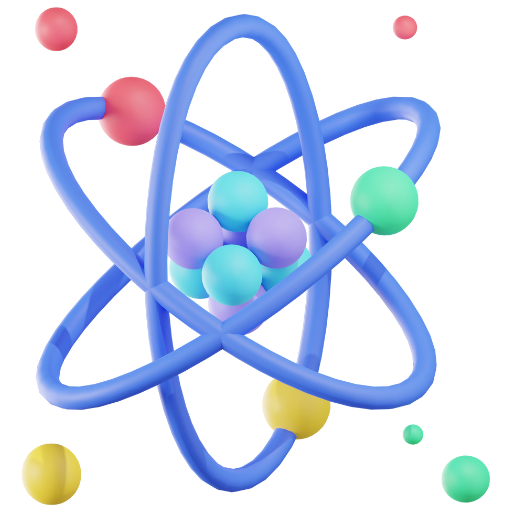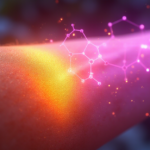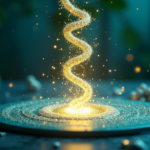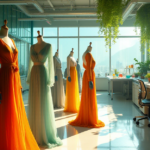Find out how colors affect human decisions and behavior. This page explores how colors influence emotion, marketing, and even our health from the soothing blues to the stimulating reds.
Table of Contents
- How Colors Affect Mood
- Color in Marketing: How Colors Influence Our Choices
- Color Therapy and Health
- Cultural Significance of Colors
- Extra’s:
How Colors Affect Mood

Have you ever entered a room and felt immediately peaceful or maybe energized? This is not only a coincidence; it’s a remarkable phenomena sometimes referred to as the science of colors. This field investigates how various mood colors affect our emotions, behavior, even our health. Consider how a vivid red sports car might inspire you or how a cool blue workplace might enable better concentrate. These are but a handful of the ways in which colors affect us in daily life.
Understanding the Psychology of Color
Color psychology is the study of how colors might affect human behavior, feelings, and perceptions. Some colors have been regularly connected to particular feelings and responses. Blue, for instance, is sometimes connected with serenity and quiet. You have probably seen how often blue is used in spas and bedrooms to encourage rest and lower stress. Colors like red and orange, on the other hand, are said to be invigorating and energizing. Fast-food restaurants and gyms sometimes feature them to generate buzz and action.
The Power of Color in Marketing and Design
From marketing to home design, knowledge of mood colors is essential in many spheres of our life. Color marketing strategies are used by marketers a lot to arouse particular feelings and affect customer behavior. A brand might employ a red logo to express urgency or blue packaging to project dependability.
Furthermore evident in interior design is the influence of color psychology. Colors are chosen by designers deliberately to evoke a particular mood or environment in a space. In a kitchen, for instance, a warm yellow might be used to evoke warmth and cheerfulness; in a bedroom, a cold blue might be used to encourage restfulness.
Through deliberate color addition to our surroundings, we may design areas that support wellness and improve our whole experience.
Color in Marketing: How Colors Influence Our Choices

Have you ever felt immediately relaxed or energetic as you entered a store? Unaware of it, this is the power of color marketing—that deliberate use of colors to affect our emotions and behavior. Sometimes this technique is known as chromotherapy. Colors elicit subconscious responses in all of us, which marketers leverage to design unforgettable brands, goods, and experiences.
Understanding Color Psychology
A fascinating discipline, color psychology studies how colors affect our mood, ideas, even physical reactions. It explores the science underlying our subconscious reactions to colors, showing how our brains relate visual data to emotions and experiences and handle visual information. Consider it: Do you get a kick of energy when you see the color red? Does blue bring you peace? These are but a handful of the several applications of color psychology.
Mood Colors in Action
Knowing these mood colors helps advertisers to establish a strong relationship with customers by inducing particular feelings connected with their products. A corporation could select blue for their logo and packaging if they wish to project dependability and trust. Red might be used if one wants to arouse excitement and energy.
Let’s review some actual case studies. While the white offers a neat and clear contrast, the famous Coca-Cola logo adds red to inspire enthusiasm and energy. One can immediately identify and remember this mix. Blue is frequently used in Dove and Crest’s packaging to symbolize peace and purity, therefore supporting the theme of these personal care items.
Color Influence on Health and Well-being
Additionally profoundly affecting our health and well-being is color. Consider how a vivid yellow may lift your mood or how peaceful a spa with soft blue and green lights might be. From anxiety and stress to sleep difficulties and even pain management, chromotherapy is a type of treatment using color to address many health issues. In home design, fashion, and even cuisine, color can evoke tranquility, enthusiasm, or attention.
If you have insomnia, for instance, you may discover that a blue room’s soothing qualities enable you to relax and fall asleep more quickly. And a brilliant yellow room might help you feel less anxious.
Thus, keep in mind the power of color and how it could affect your decisions and well-being the next time you are decorating a room or shopping! Never undervalue how much colors affect our life.
Color Therapy and Health

Have you ever found that particular colors evoke specific emotions? Perhaps a deep blue helps you to relax, while a brilliant yellow makes you happy. This is so because, as color therapy or chromotherapy emphasizes, colors can influence our mood and well-being. This is a fascinating subject that investigates how purposefully color choices could improve our health.
How Color Therapy Works
The theory behind color therapy is that various colors interact with our energy systems using distinct wavelengths. Certain colors applied in particular ways can perhaps influence our bodies and brains. To help us sleep better, for instance, we might use a blue light, or dress in red to increase our vitality.
Colors can be classified, some say, as either peaceful, energetic, or balancing.
- Calming Colors: Blue, green, and purple are often associated with relaxation and tranquility. For instance, blue can help regulate our sleep cycles, making it a great color for bedrooms.
- Energizing Colors: Red, orange, and yellow are vibrant colors that are known for their stimulating effects. These colors can help us feel more alert and creative.
- Balancing Colors: Green and blue are also considered balancing colors because they can help regulate our emotions and create a sense of calmness and well-being.
Color Therapy in Everyday Life
Color therapy goes beyond just applying particular colors for particular goals. It also emphasizes the need of realizing how colors affect our daily life. Have you ever seen, for instance, how color marketing use colors to affect our purchase decisions? If a product is presented in a color we connect with enthusiasm or happiness, we could be more likely to purchase it.
In your own house, color therapy can also help to establish a more harmonic and cheerful surroundings. To help you relax in your bedroom, for instance, you may choose peaceful colors like blue and green. Alternatively, you may utilize stimulating hues like yellow and orange in your kitchen to raise your vitality levels.
All things considered, color therapy is an interesting subject that clarifies the power of color. Clearly, color is important in our life whether we are deliberately employing colors to enhance our health or just appreciating the colors all around us.
Cultural Significance of Colors

Have you ever noticed how quickly a given color could arouse an emotion or memory? Our life revolves on color; it affects our emotions, shapes our decisions, and even shapes our cultural perspective of the planet. Deep symbolic implications of colors abound in many civilizations, impacting everything from marketing techniques to religious traditions.
Colors and Their Meanings: A Cultural Tapestry
Affected by historical events, religious beliefs, and social conventions, each society views color through a different prism. In foreign business and travel, good communication depends on an awareness of these cultural links.
- Red: In Western cultures, red is associated with passion, love, and danger. Think of a red rose, a stop sign, or a fire engine. It’s a color that demands attention, signifying urgency and excitement. In contrast, in China, red represents good luck, happiness, and prosperity. It’s commonly used during celebrations and weddings, adding a vibrant touch of optimism to these joyous occasions.
- Blue: In Western cultures, blue is often linked to calmness, peace, and tranquility. It’s frequently used in hospitals and spas to create a soothing atmosphere, promoting relaxation and well-being. You might be surprised to learn that in some Asian cultures, blue symbolizes sadness and mourning.
- Green: In Western cultures, green often represents nature, growth, and prosperity. It’s a color associated with life, renewal, and abundance. In Islam, green holds a special significance, symbolizing paradise and considered a sacred color.
- White: White is often associated with purity, innocence, and peace in Western cultures. It’s commonly used for weddings and funerals, representing a sense of new beginnings or finality. In some Asian cultures, white signifies mourning and death.
- Black: In Western cultures, black is often associated with mourning, mystery, and power. It’s a color that can evoke a sense of sophistication and authority. In some African cultures, black symbolizes strength and resilience, representing the enduring spirit of the people.
These are only a handful of the ways that color symbolism impacts our perspective of the world. Understanding the cultural colors and their meaning can help us to respect the variety of human experiences and improve our communication across civilizations.
The Power of Color in Everyday Life
Did you realize how strongly color may affect our emotions and actions? In one study, for instance, participants in a room painted blue were more likely to relax and feel tranquil; those in a room painted red were more likely to feel invigorated and aroused. This is a wonderful illustration of how, even in unconscious awareness, color can affect our attitude and conduct.
Chromotherapy and the Healing Power of Color
Chromotherapy, sometimes referred to as color therapy, uses color’s healing qualities to advance emotional, mental, and physical well-being. Various colors are thought to have distinct medicinal properties that affect our energy level, emotions, and even our sleep habits. For instance, blue is meant to encourage rest and sleep; yellow is sometimes used to increase energy levels.
To help your well-being, consider color therapy methods right at home. Use colored lights or crystals to create a relaxing or invigorating environment; surround yourself with colors you enjoy. The good effects colors can have on your general state of health would surprise you.
Color and the World of Marketing
In the field of marketing and branding, color is a really effective instrument. Businesses carefully select particular colors for their logos, packaging, and marketing materials to arouse particular feelings and connections in consumers. A company selling luxury goods, for instance, would opt to use black or gold to exude refinement and uniqueness; a company providing nutritious food might choose green to link their offerings with nature and freshness.
One cannot dispute how color influences customer behavior. Building effective marketing campaigns that appeal to the target audience depends on an awareness of color meaning and its psychological consequences.
With ramifications for everything from art and fashion to business and psychology, color is a fascinating and complicated topic. Understanding how colors affect our views and actions can help you to design a more harmonic, beautiful, and meaningful existence.
Extra’s:
If you’re fascinated by the way colors influence our perceptions and emotions, you might also be interested in delving into the fascinating realm of sound and its mysteries. Our post “Can We Hear Sound in Space? Unveiling the Truth” explores the intriguing question of whether sound can travel through the vacuum of space, shedding light on the unique characteristics of sound propagation. Similarly, if you’re seeking a deeper understanding of how colors are used to influence consumer behavior, our blog post “The Science Behind Edible Insects: Nutrition and Sustainability” delves into the fascinating world of entomophagy, exploring the nutritional benefits and environmental sustainability of incorporating insects into our diets.
For a broader understanding of color psychology and its practical applications, exploring reputable external resources can be highly beneficial. “How do colors in my home change my mood? Color psychology explained | Mental Health America” offers valuable insights into the psychological impact of colors on our daily lives and well-being, while “Color in Marketing: How Color Affects Customer Behavior | SOLUM ESL” dives deep into the strategic use of color in marketing and its influence on consumer decisions.












1 thought on “The Psychology of Color in Everyday Life”